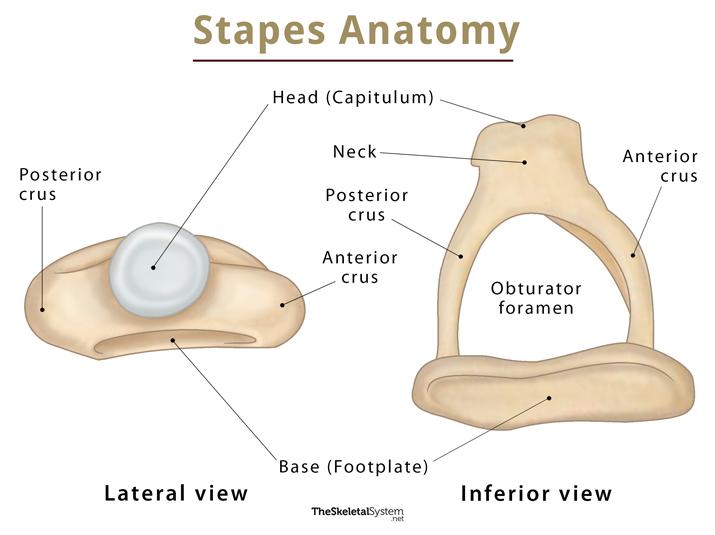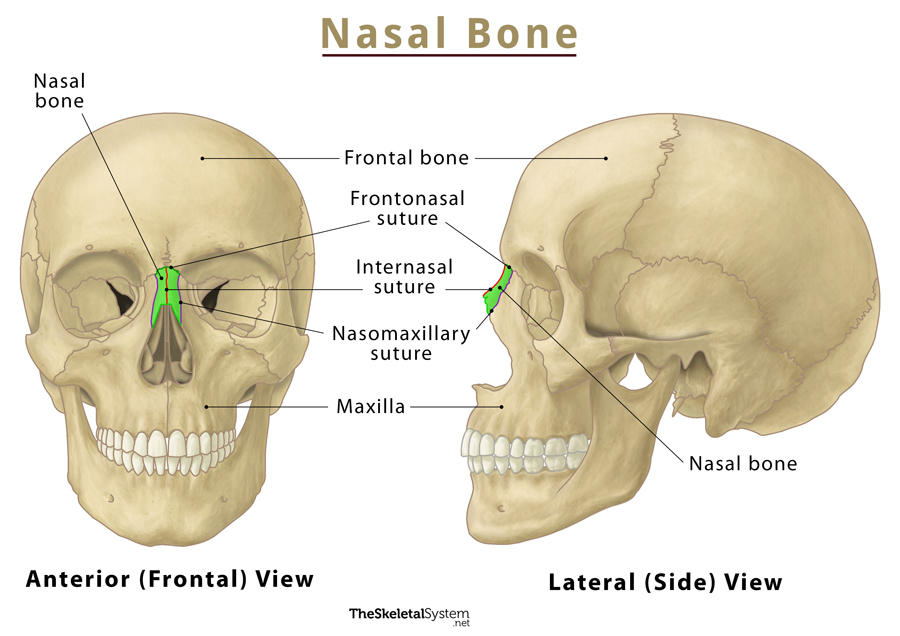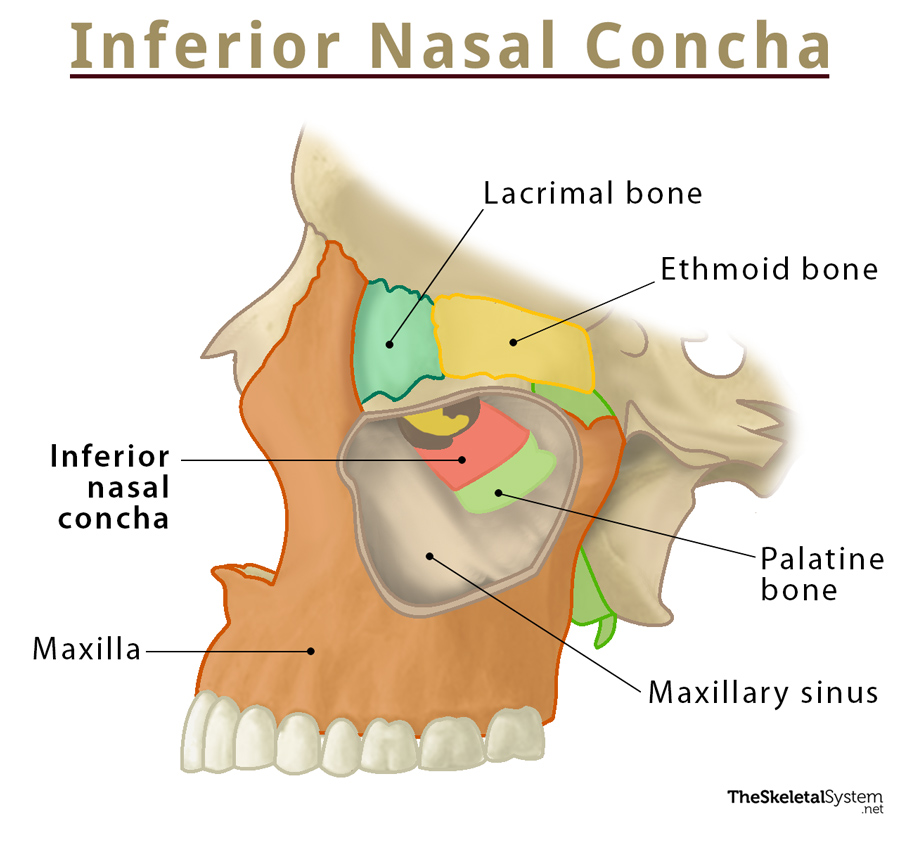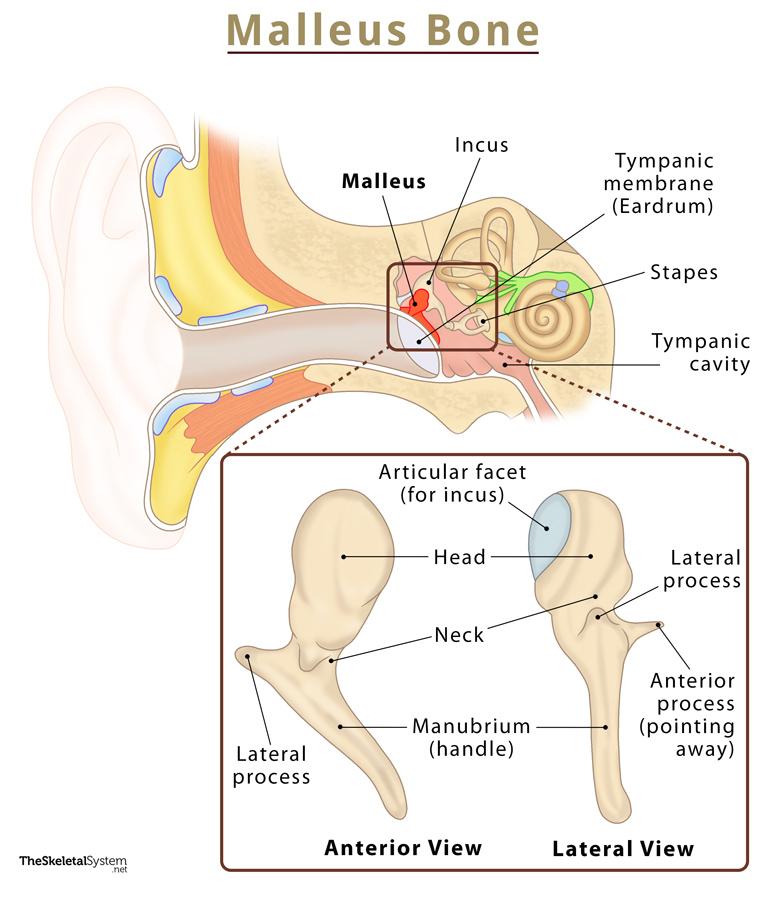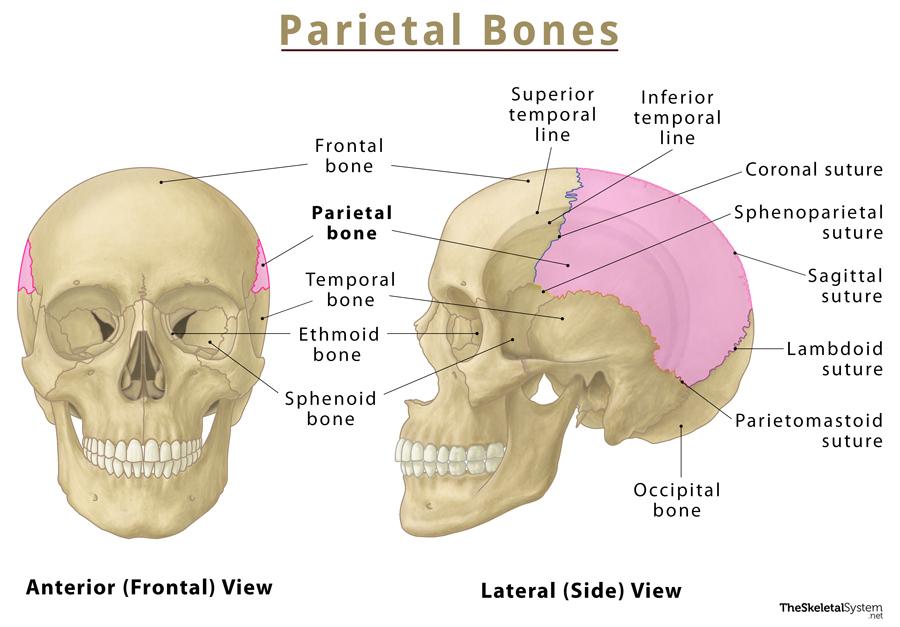Stapes
Table of Contents:
Published on April 8th 2022 by staff
What is the Stapes
Stapes, also known as the stirrup bone, is one of the three ear ossicles found in the middle ear, besides the incus and malleus. It is also the most medial of the three middle ear bones and the smallest bone in the human body. The name of the bone comes from the Latin word ‘stapes’, which refers to a stirrup, the foot-hold attached to a horse-saddle, due to its resemblance in shape with the same.
Where is the Stapes Bone Located
As stated, it is the innermost ear ossicle, located most medially.
Quick Facts
| Type | Irregular Bone |
| Size (in a typical adult) | Height: About 3.5 mm Width: About 2.5 mm |
| How many are there in the human body | 2 (1 in each ear) |
| Articulates with | Incus |
Functions
The main function of the stapes bone is to aid in the hearing process.
When sound waves hit the eardrum, it starts to vibrate. This vibration travels through all three bones of the middle ear and gets amplified. Stapes is the last bone of this chain. It hits the oval window of the inner ear, generating a wave in the cochlear fluid. This initiates a process that converts sound waves into electrical signals, which are then interpreted by the brain, thus completing the hearing process.
Anatomy
The stapes is stirrup-shaped, with a head, two limbs or crura, a neck, and a base.
Head: The bone has a concave head or capitulum featuring a depression, which is covered by cartilage and articulates with the lenticular process of the incus.
Neck: It is the constricted part of the bone, present just below the head. The tendon of the stapedius muscle attaches here.
Limbs or crura: The two bony limbs, called anterior and posterior crura, diverge from the neck and are connected at their ends by a base. The anterior is shorter and less curved than the posterior of the two crura. The hollow space formed by these two limbs is termed obturator foramen.
Base: Also known as foot piece or footplate, it is a flattened oval plate attached to the neck via anterior and posterior crura or limbs. It articulates with the oval window of the inner ear.
Muscle and Ligament Attachment
Muscles
The stapedius muscle is attached to the neck of the stapes. This muscle contracts in response to loud noise, pulling the annular ligament, thus preventing excessive movement of the stapes bone.
Ligaments
- Stapedial annular ligament (SAL): It is a ring of soft fibrous tissue connecting the base of the stapes to the oval window of the inner ear via a mucosal layer called stapedial membrane.
- Annular ligament of the stapes (stapedial annular ligament): It is a ring of fibrous tissue around the oval window that connects it to the base of the stapes in the tympano-stapedial syndesmosis.
Articulations
- Incudostapedial joint – A synovial joint between the lenticular process of the long limb of the incus and the head of the stapes.
References
- Stapes – Radiopaedia.org
- Stapes bone – Physio-pedia.com
- Anatomy, Head and Neck, Ear Ossicles – Ncbi.nlm.nih.gov
- Auditory ossicles – Kenhub.com
- The Middle Ear – Teachmeanatomy.info

